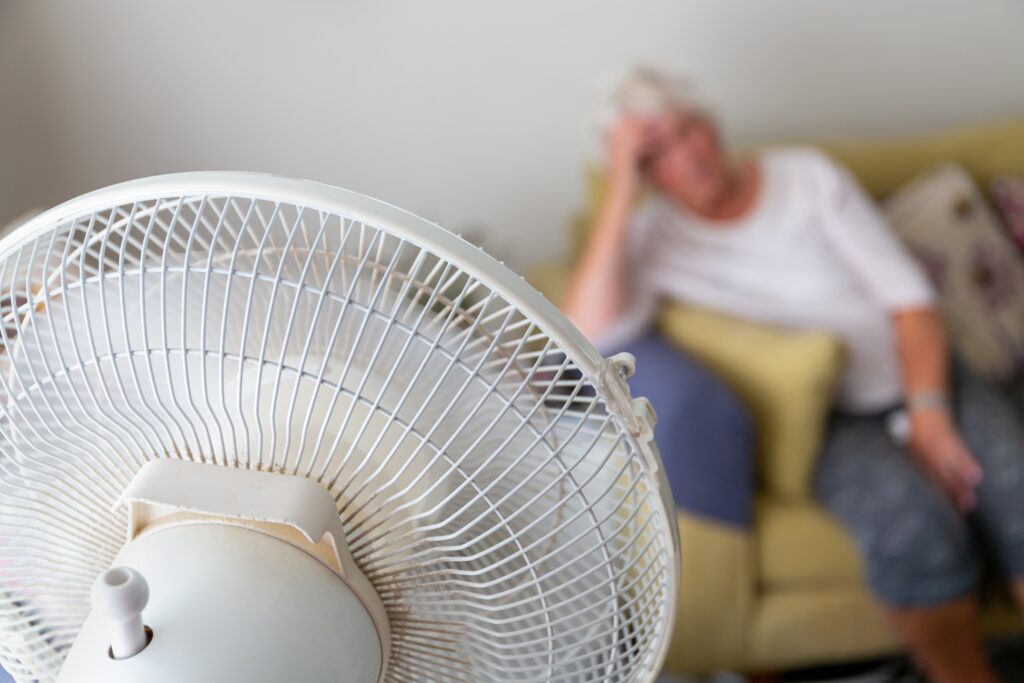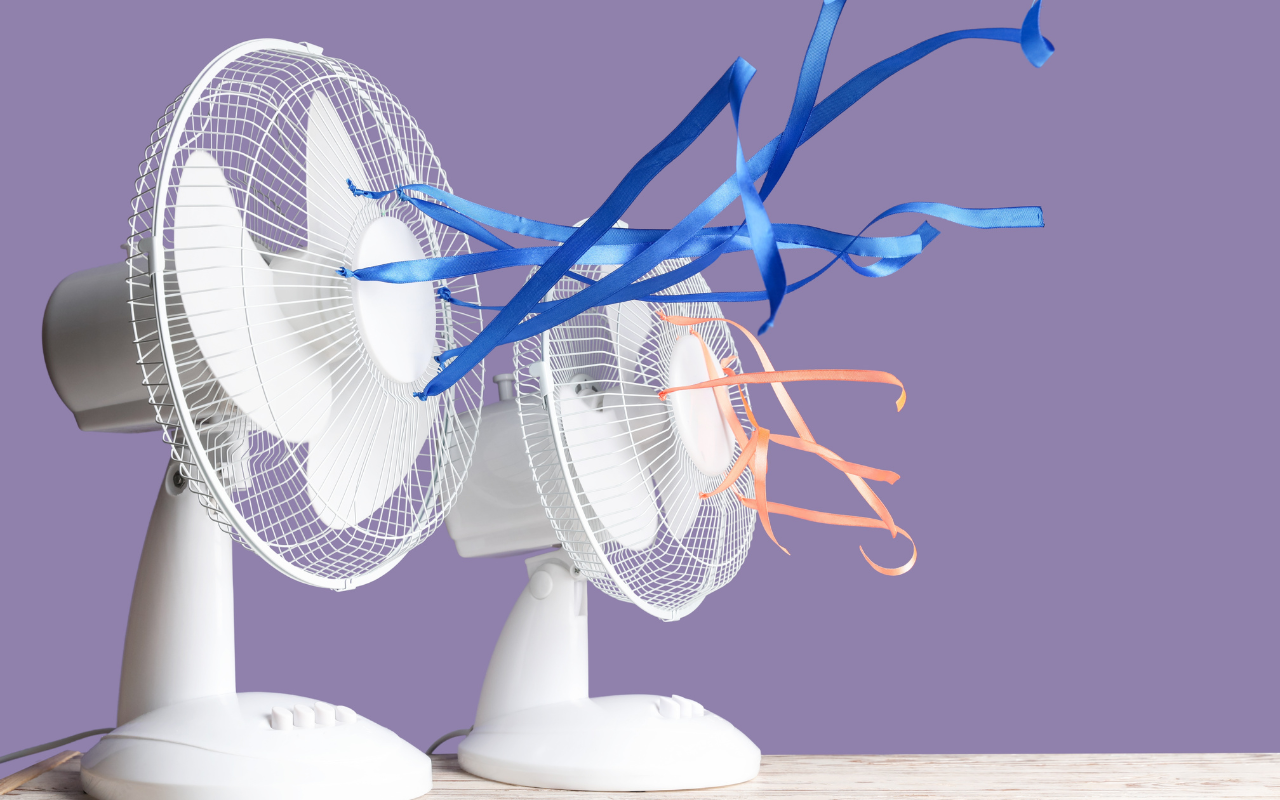Using electric fans before air conditioners not only protects against heat-related illness, but is cheaper and more energy efficient, which researchers say is increasingly crucial for vulnerable populations as the world grapples with climate change.
Global heat-related mortality is estimated to be about 489 000 deaths per year, and these numbers are estimated to rise with changing weather patterns associated with global warming.
Heat-related illnesses occur when environmental heat stress exceeds the body’s physiological limits of heat tolerance, with the effects exacerbated by age, chronic illness and other vulnerabilities.
The University of Sydney (USYD) Heat and Health Research Centre is publishing fan-first heat-health protection research along with the Monash University Sustainable Development Institute, in the Medical Journal of Australia.
Fan-first cooling strategy: a local focus
The Heat and Health Research Centre at USYD has worked with national organisations including the National Rugby League and Australian Open, along with the World Health Organization and Google, to create simple, low-resource cooling strategies for heat health.
Professor Ollie Jay is the centre’s academic director.
“This perspective paper brings together findings from studies published in the last 3–4 years, placing them in an Australian context,” said Professor Jay.
“The Australian Council of Social Services (ACOSS) conducted a survey and found about 68% of people who were heat vulnerable and own an air conditioner, don’t use it on hot days because of the cost. Around 14% experienced heat illness symptoms,” he said.
Prof. Jay said that even when people do use air conditioning, it contributes to global warming.
“[Air conditioners] deliver more CO₂ into the air – and then that aggravates global warming. People adapt by using more air conditioning,” said Prof. Jay.
“On very hot days, places like Sydney that have relatively frail energy infrastructure, are not set up to cope with these enormous demands where everybody’s turning on air conditioners at once.”
“And so, there is the threat of electrical blackouts, which means that some people won’t have access to the air conditioning that they need,” he said.

The most vulnerable communities
The Heat and Health Research Centre work is aimed at helping those most at risk, including those with cardiovascular conditions, who are particularly vulnerable to heat-related complications.
“People with cardiovascular disease are not dying of heat stroke – they’re dying of heart attacks. The strain on the cardiovascular system results in a catastrophic event,” said Prof. Jay.
The authors also published a study in the New England Journal of Medicine, which showed that using fans alone, where no air conditioning was available, reduced cardiovascular strain (as well as subjective discomfort) in much hotter than average conditions.
“We measured heart rate and blood pressure to look at cardiac workload. With the right conditions, fans can reduce the workload on the heart and reduce risk,” said Prof. Jay.
The strategy aims to create a win–win solution, based on the psychology of temperature: how the body feels cooler.
“If a room is 23°C and you start circulating that air across your skin using a pedestal fan, that airflow makes the air feel cooler by about 4°C. So, it will feel like it’s 19°C,” he said.
“So, [with fans], you can let the temperature increase to 26 or 27°C, and it feels just as cool,” he said.
The research found that electric fans are effective at reducing heat stress up to:
- 39°C for young healthy adults;
- 38°C for older adults; and
- 37°C for older adults taking anticholinergic medications.
Above these temperatures, fans may increase heat strain unless combined with other methods of cooling, like wetting the skin or moving to a cooler environment.
Reducing emissions while cooling
Research suggests that if three-quarters of Australians used a fan-first strategy in a normal meteorological year, it would reduce electricity consumption by 70%.
In terms of emission reduction measures, “[the strategy would be] even superior to the previous best example, which was everyone switching to LED lights,” said Prof. Jay.
“There’s a massive reduction in electricity consumption, and a massive reduction in cost from electricity bills. And people feel exactly the same,” he said.
The centre asked sustainability experts to perform a greenhouse gas abatement cost analysis.
“Because this is a very cheap, scalable intervention, the ratio of the benefit to cost is really high.”
Global health implications
As global temperatures exceeded the 1.5°C threshold above pre-industrial levels for the first time in recorded history, in 2024, heat-related deaths were also increasing.
“If we look at the literature that describes how much anthropogenic climate change is responsible for those increases in heat-related deaths, globally it’s around about 40%,” said Prof. Jay.
He said that although heat-related deaths and hospitalisations are the tip of the iceberg, many of its effects are below the surface.
“Heat has an enormous impact on our economy, the ability to work safely. People experiencing non-hospitalisation heat health impacts. They might have to take sick days, or we have hot schools that impact the ability of kids to learn. Extreme heat exposure affects pregnancy as an increased risk of premature deliveries or even stillbirths,” said Prof. Jay.
“So, all of these impacts that are not resulting necessarily in mortality, not necessarily resulting in direct hospitalisation, but still are having an impact on Australians’ health and global health. And the trajectory that we’re on is undeniable,” said Prof. Jay.
Professor Jay said that the point of the fan-first strategy is to both mitigate and adapt to the effects of climate change on heat.
“We’re at the point now where we have to do both of these things together,” he said.
Practical tools for public use
Alongside strategies, the Heat and Health Research Centre has developed tools to help individuals assess and manage their own heat risk.
“We developed the HeatWatch tool, which is recommended by Queensland Health and NSW Health. It enables people to create a personal profile, with inputs like age, medications, postcode, and gives an individualised heat stress risk score,” said Prof. Jay.
HeatWatch uses weather data and physiological modelling to provide advice, including forecasting.
The centre is applying for funding to broaden the tool’s use and to co-design it with culturally and linguistically diverse communities.
The centre is working on global strategies for nations and populations that may not have access to air conditioners at all, or phones.
The centre is developing a thermo-sensitive poster that reacts to indoor temperature, so that people without phones or data can still get guidance.
As heat vulnerability increases
Professor Jay said that the next step is ensuring that fan-first cooling strategies are adopted in health and energy policy.
“If we’re serious about saving lives and reducing emissions, this knowledge has to reach the community level,” he said.
“We want to run a randomised controlled trial to show that using HeatWatch reduces heat-related health symptoms in communities,” said Prof. Jay.
He believes that education, housing design, and energy subsidies could all support strategies such as fan-first cooling, to try to mitigate the health effects of heat.
“We need to think about fans the way we think about sunscreen: as a basic, essential tool for safety,” he said.
“Climate change is here. The question is how we help people survive it – especially the most vulnerable.”
Read the research in the Medical Journal of Australia.
Subscribe to the free InSight+ weekly newsletter here. It is available to all readers, not just registered medical practitioners.

 more_vert
more_vert
I think there needs to be a re-thinking about how electric fans are being used; I am not confident this is explained clearly in this opinion piece:
1. Directing cooling of human body by evaporative heat loss when sweat or water evaporates into water vapour taking away heat from the body. This is best done by positioning the fan output into the human body. Doesnt work very well in high humidity environment as the water/sweat struggles to
2. Indirect cooling by heat radiating from the human body to the surrounding environment largely to the air. The fan reduce the temperature in the room by promoting circulation of air from outside into the inside as free flowing air in the environment is more likely to be lower temperature than inside a confined space like a house. This doesnt work well if the outside environment is similar or hotter than inside the room. Ironically the best position for the fan to work this way is when the door and the window best facing the door in the room, with the fan blowing directly into the doorway or the window (ie the fan drawing the air from the room to outside the room in one end and this is replaced by air from outside the room from the other direction). Depending on the time of the day and position of the sun*, the fan may be reposition to be blowing outwards via the window or the door of the room.
* whether air in the rest of the house is expected to be cooler or hotter than the air outside the house.
Obvious this is counter-intuitive to how many of us are taught on using the fan.
Furthermore, there is also confusion about air turbulence, mistaking it as air flow across the room. For example standing infront of the fan with the wall behind your back may create turbulence and encourage some evaporation at low humidity, but the hotter air actually does not flow actually flow out of the room so the room temperature will inevitably rise.
Unfortunately after reading this article and the quotes from various experts, I am not certain medicalised heat management advice actually give sufficient weight to other methods of heat loss beyond water evaporation (which is how the human body is primarily doing) and seeking a shaded shelter during the day.
We need to do better when giving advice